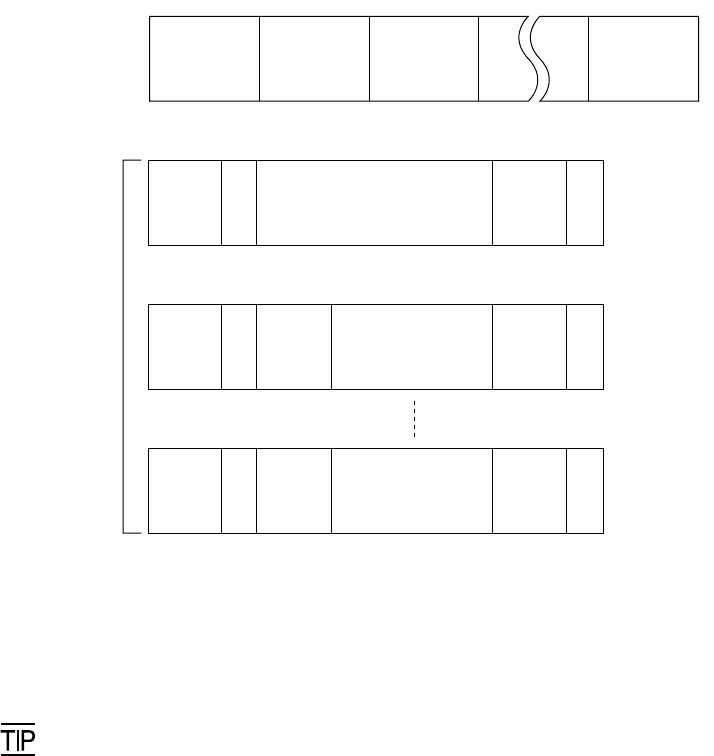
125
Chapter 3. Communications Operations of the BHT-100Q/100B
S
O
H
E
T
X
C
R
C
S
T
X
E
T
X
C
R
C
S
T
X
E
T
X
C
R
C
D
L
E
D
L
E
D
L
E
D
L
E
D
L
E
D
L
E
I
D
I
D
I
D
(2 bytes)
(5 bytes)
•
•
•
•
•
•
[ 3 ] Basic Format of Transmission Messages
Basically, the BHT transmits data as units of a file. First, it transmits a heading text
which includes the attribute information of a file (e.g., file name and the number of
data texts) to be transmitted. Following the heading text, it transmits the data text in
the file. A heading text and data text comprise a text.
In actual text transmission, the text is divided into several blocks, then a header,
terminator, serial number, receiver station's ID, and CRC-16 (Cyclic Redundancy Check)
are added to each block. This procedure forms a transmission block. A set of
transmission blocks makes up one transmission message.
Shown below is an example of a transmission message formed with the BHT-Ir
protocol.
In the above figure, DLE SOH, DLE STX and DLE ETX are text control characters as
described in [ 2 ] Control Characters, (2). An ID denotes the ID number of the receiver
station, expressed by two bytes. A serial number is expressed by a five-digit decimal
number, starting from 00001 to 32767, and identifies data texts. For the CRC-16, refer
to Appendix B, B.2, "BHT-Ir protocol, " [ 3 ].
You can use the control characters for expressing IDs, serial numbers, or text data.
Data text 1 Data text 2 Data text n
Heading
text
Transmission
Message
Data text 1
Transmission
block
Transmission
block
Text
Heading text
Serial
number
Data text n
Serial
number
Transmission
block


















